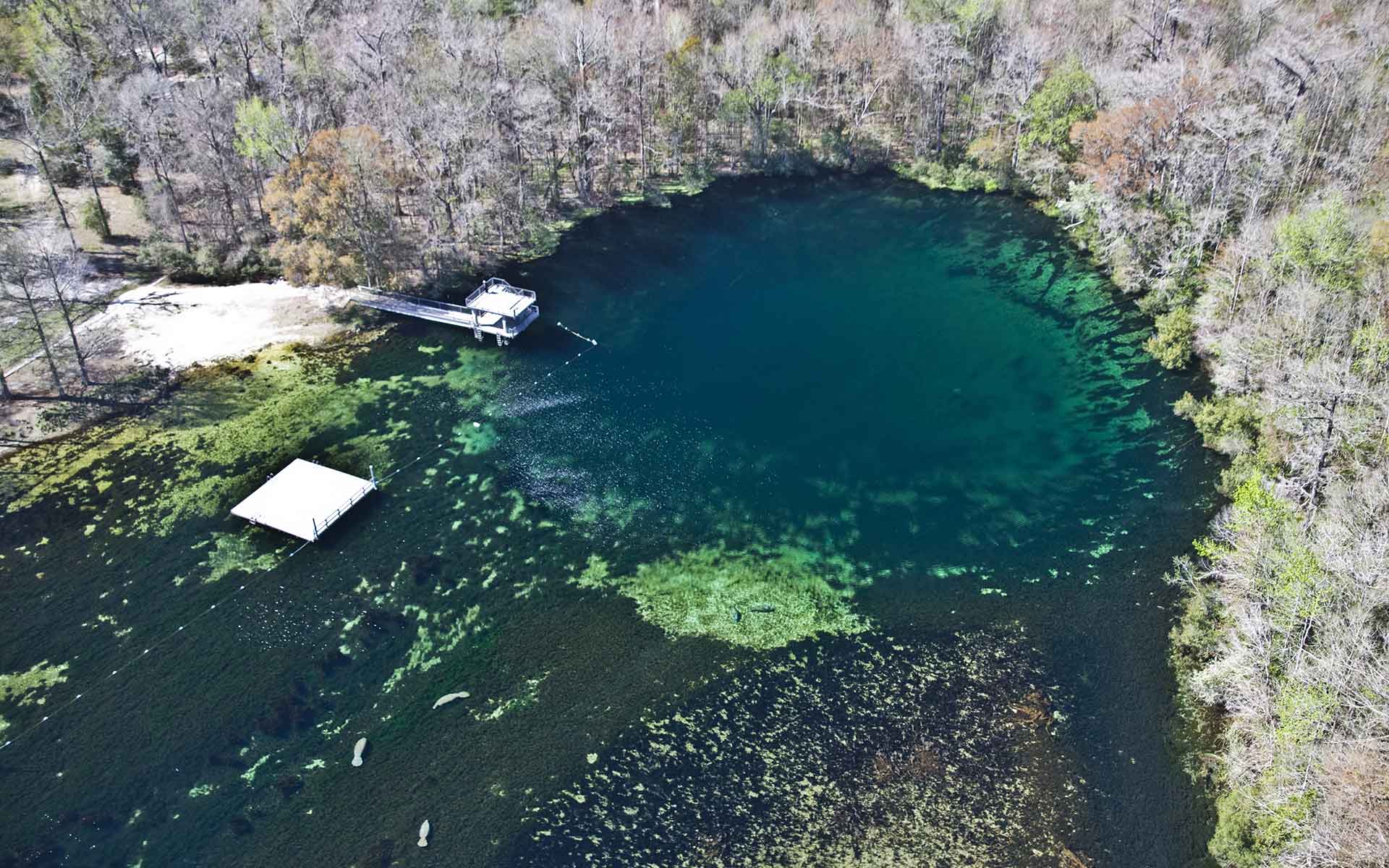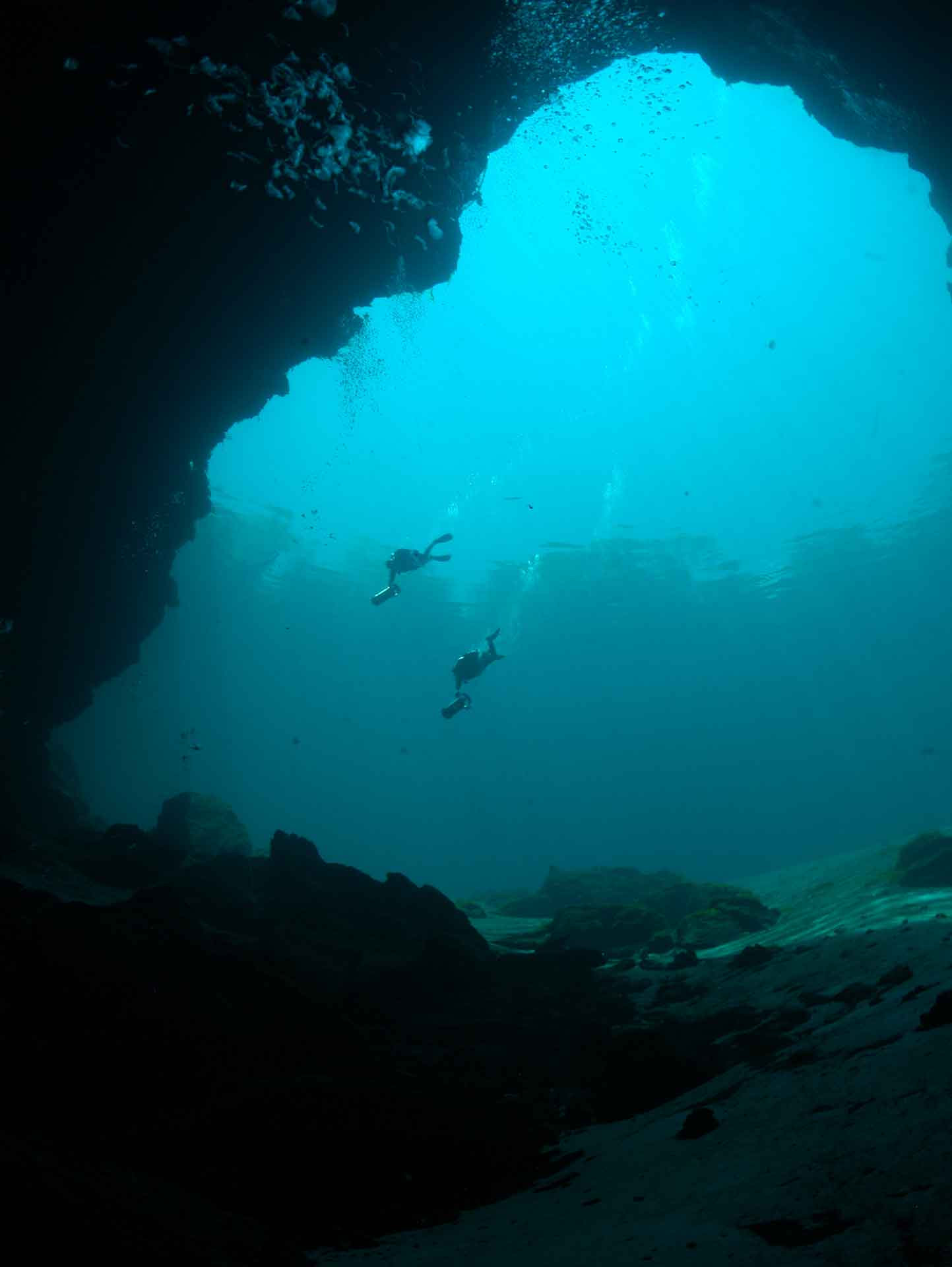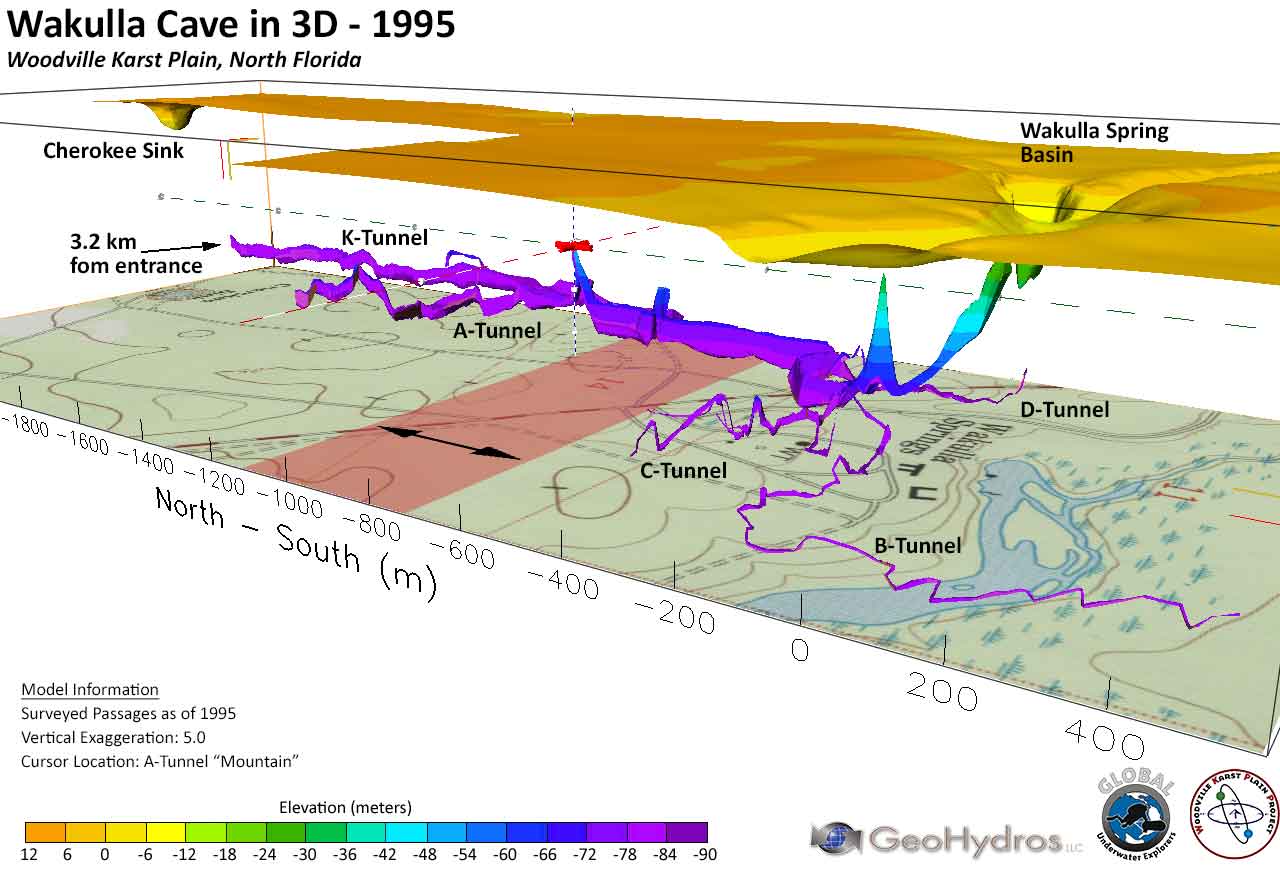
Aerial view overlooking Wakulla Spring pool and spring run (courtesy of Florida Geological Survey).
Geological Period
Neogene to Quaternary
Main geological interest
Geomorphology and active geological processes
Paleontology
Location
Tallahassee, Florida, United States of America
30°14’06”N, 084°18’10”W
Aerial view overlooking Wakulla Spring pool and spring run (courtesy of Florida Geological Survey).
The largest individual spring and the longest submerged spring cave system in the United States.
Wakulla Spring is the strongest individual spring in the United States. As of January 2023, more than 72 kilometers of submerged channels have been explored by cave divers making it also the longest spring system in the country. Paleontological interest in the spring began in 1850, when the bones of an ancient mastodon were found at its bottom. Since then, scientists have identified the remains of at least nine other extinct mammals that date to the last glacial period, deposited as far as 360 meters back into the main submerged passage. Humans had occupied the area for nearly 15,000 years.
- Geological description
Wakulla Spring, the main source of Wakulla River, is in Edward Ball Wakulla Spring State Park, 22 kilometers south of Tallahassee, Florida. It is the largest individual spring in the United States and has an average discharge rate of 13.6 m<sup>3</sup>/s for the period of record between 1907 and 2019. Seasonal discharge ranges from 0.7 m<sup>3</sup>/s to 59 m<sup>3</sup>/s, which is the largest reported range of discharge for any spring in Florida (Rupert, 1988; Scott et al., 2002; NWFWMD, 2021). The water flowing from Wakulla emerges from the vast Upper Floridan Aquifer which is here composed of Miocene St. Marks Formation and Oligocene Suwannee Limestone. The main recharge area of Wakulla Spring is in Woodville Karst Plain characterized by more than 1000 water-filled sinkholes and numerous sinking streams many of which were dye-traced to delineate the spring drainage area (Kincaid, 2006). Overlying the St. Marks Formation is a thin layer of sand and clay deposited during the Pleistocene. The fossil remains of mammoths, mastodons, giant sloths, camels, bison, and saber-tooth tigers have all been found both in Wakulla Spring and in the Wakulla River. Archaeological evidence suggests that humans had occupied the area for nearly 15,000 years (Glowacki and Dunbar, 2019).
- Scientific research and tradition
Network of submerged spring conduits, ranging between 2 and 30 meters, have been explored by cave divers since 1950s, hydrologic investigations have been conducted since 1907, and paleontological investigations since 1850. Major Hollywood movies, including early Tarzan films, were filmed at the location.
- Reference
Glowacki, M. (2019) ‘Illicit Digging, Illicit Collecting, and Archaeology: A Perspective from Florida’, in D.K. Thulman and E.G. Garrison (eds) New Directions in the Search for the First Floridians. University Press of Florida, p. 0. Available at: https://doi.org/10.5744/florida/9781683400738.003.0009.
Kincaid, T. (1999) Morphologic and Fractal Characterization of Saturated Karstic Caves. Ph.D. Geohydrology. The University of Wyoming. Available at: https://doi.org/10.13140/RG.2.1.2523.9448.
Kincaid, T. (2006) ‘Karst Hydrogeology of the Woodville Karst Plain – Wakulla & St. Marks River Basins’, in Field trip guide book including full page maps. American Society of Civil Engineers Conference, SEGS • FAPG • GUE • HC • HKI. (Field trip guide book), p. 9. Available at: http://wakullaspringsalliance.org/wp-content/uploads/2020/04/Kincaid.2006.Karst-Hydrogeology-of-the-Woodville-Karst-Plain.sans-maps.pdf.
Northwest Florida Water Management District (NWFWMD) (2021) Recommended Minimum Flows for Wakulla and Sally Ward Springs, Wakulla County, Florida. Program Development Series 21-XX. Havana, Florida, p. 164 p. Available at: https://floridasprings.org/wp-content/uploads/2021/08/Final_Wak_SW_MFLDocument.pdf.
Rupert, F. (1988) The Geology of Wakulla springs. Open File Report No. 22. Tallahassee, Florida: Florida Geological Survey, p. 18. Available at: http://wakullaspringsalliance.org/wp-content/uploads/2020/04/The-Geology-of-Wakulla-Springs.1988.pdf.
Scott, T.M. et al. (2002) First Magnitude Springs of Florida. Open File Report No. 85. Tallahassee, Florida: Florida Geological Survey.
- Author(s)
Zoran Stevanovic.
(Past-Chair)The Karst Commission of the International Association of Hydrogeologists, Univ. Belgrade. Servia.
Neven Kresic.
(Past Co-Chair) The Karst Commission of the International Association of Hydrogeologists.


